Author: Jordan Folks
Crisp, clean, and supremely thirst-quenching, American Lager is a style that was highly inspired by their European counterparts, a spin on the classic German Pilsners brought over by immigrants in the mid-19th century. Given a lack accessibility to the ingredients these new American brewers were accustomed to using, they began relying on what was readily available including rice, which in addition to being less expensive than traditional malted barley, had some other desirable qualities.
As it pertains to brewing, rice comes in several forms, one of which is rice syrup solids, which is a white powder made by dehydrating rice syrup. When used in beer, rice syrup solids contribute fermentable sugars, thus increasing the ultimate strength of the beer while adding essentially no color, aroma, or flavor. It also helps to keep the body light enough to maintain the quintessential crisp drinkability American Lager is known for.
As much as I love traditional European lager styles, I’ve brewed a number of crushable adjunct-laden lagers over the years, and I’ve settled on rice syrup solids as my go-to adjunct of choice. In addition to being inexpensive and easy to use, I’ve found it does exactly as expected while contributing less noticeable flavor than other adjuncts such as corn. Curious of the perceptible impact rice syrups solids have on an American Lager, I designed an xBmt to test it out.
| PURPOSE |
To evaluate the differences between an American Lager made with all malted barley and one where 20% of the malt was replaced by rice syrup solids.
| METHODS |
I went with a very simple American Lager recipe for this xBmt, swapping out 20% (2 lbs/0.9 kg) of the barley malt with rice syrup solids for one of the batches. Big thanks to F.H. Steinbart for supplying the malt for this batch!
Wave That Flag
Recipe Details
| Batch Size | Boil Time | IBU | SRM | Est. OG | Est. FG | ABV |
|---|---|---|---|---|---|---|
| 6 gal | 60 min | 10.8 | 4.2 SRM | 1.045 | 1.008 | 4.86 % |
| Actuals | 1.045 | 1.008 | 4.86 % | |||
Fermentables
| Name | Amount | % |
|---|---|---|
| Isaria 1924 | 8 lbs | 80 |
| Rice Syrup Solids | 2 lbs | 20 |
Hops
| Name | Amount | Time | Use | Form | Alpha % |
|---|---|---|---|---|---|
| Mount Hood | 14 g | 60 min | Boil | Pellet | 5.4 |
| Mount Hood | 7 g | 5 min | Boil | Pellet | 5.4 |
Yeast
| Name | Lab | Attenuation | Temperature |
|---|---|---|---|
| Pilgrimage (L26) | Imperial Yeast | 77% | 44.1°F - 55.9°F |
Notes
| Water Profile: Ca 50 | Mg 4 | Na 10 | SO4 50 | Cl 47 |
Download
| Download this recipe's BeerXML file |
A couple days before brewing, I built a single large starter of Imperial Yeast L26 Pilgrimage.
I started my brew day by collecting the full volume of filtered tap water for two 5 gallon/19 liter batches, adjusting each to the same mineral profile, and getting them heating up before milling the grain.
Once the waters were properly heated, I incorporated the grains and set my Clawhammer Supply 240v controllers to maintain a mash temperature of 148°F/64°C.
During the mash rests, I weighed out the kettle hop additions.
When the 60 minute mashes were finished, I removed the grains and set the controllers to heat them up. It was at this point the rice syrups solids were added to the batch of wort produced with 20% less malted barley.
At the completion of each 60 minute boil, I quickly chilled the worts and transferred identical volumes to sanitized fermentation kegs before taking refractometer readings showing the one made with rice syrups solids was 0.006 SG points higher than the all malt version.
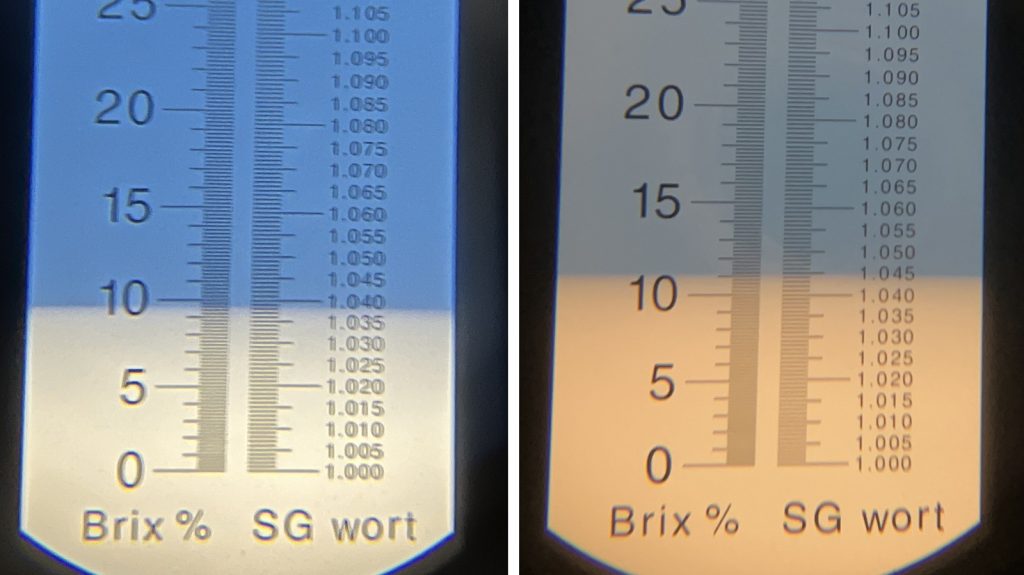
The filled fermenters were placed in my chamber for a few hours until they stabilized at my desired fermentation temperature of 49°F/9°C, at which point the yeast starter was evenly split between them. The beers were left to ferment for a week before I began gradually raising the temperature to 62°F/17°C. Following a two-day diacetyl rest, I ramped the temperature down to 31°F/0°C then took hydrometer measurements showing a small difference in FG.
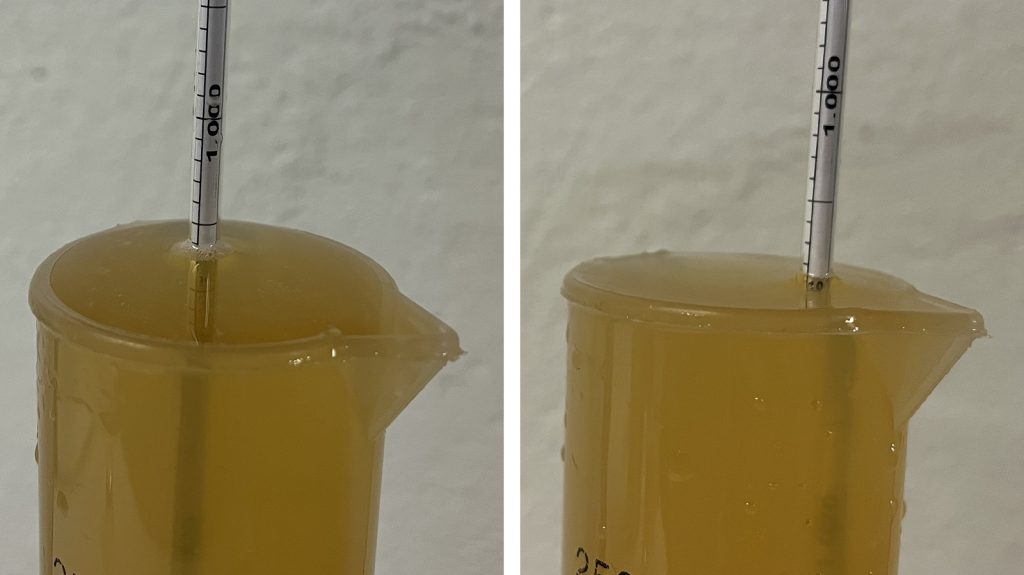
The cold beers were then were pressure-transferred to CO2 purged serving kegs that were placed on gas in my keezer and allowed to lager for a month before they were ready for evaluation.
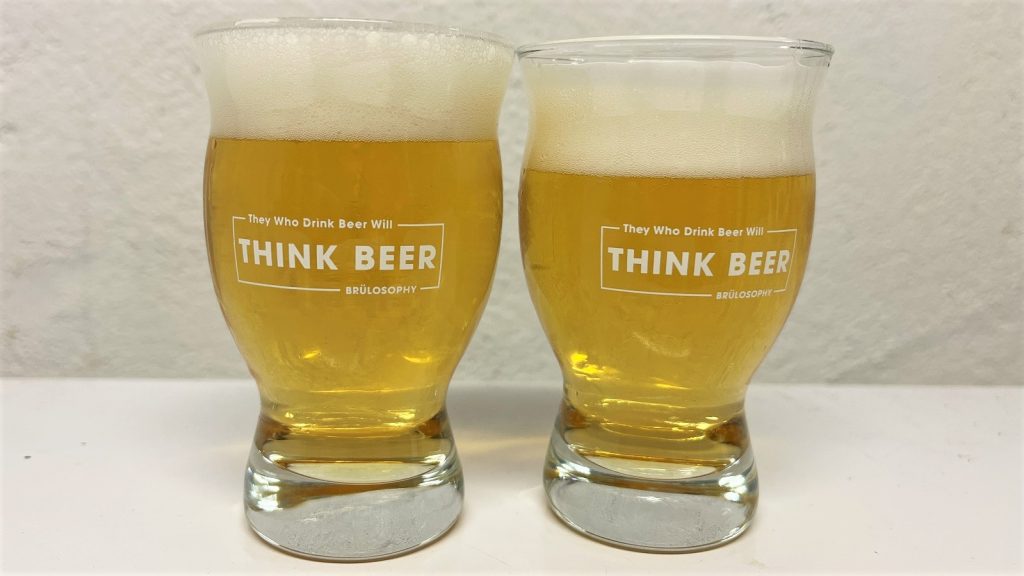
| RESULTS |
A total of 20 people of varying levels of experience participated in this xBmt. Each participant was served 1 sample of beer made with all barley malt and 2 samples of the beer made with 20% rice syrup solids in different colored opaque cups then asked to identify the unique sample. While 11 tasters (p<0.05) would have had to accurately identify the unique sample in order to reach statistical significance, only 5 did (p=0.85), indicating participants in this xBmt were unable to reliably distinguish an American Lager made with all barley malt from one where 20% of the barley malt was replaced by rice syrup solids.
My Impressions: Out of the 5 semi-blind triangle tests I attempted, I correctly identified the odd-beer-out 3 out of 5 times. Visually, the all malt beer was slightly darker than the one made with rice syrups solids, and I perceived the latter as being a bit drier on the palate. However, they were certainly far more similar than they were different.
| DISCUSSION |
Modern American Lager got its start in the mid-19th century when German brewers who immigrated to the United States began making versions of the traditional Pilsners common in their homeland. However, for various reasons including availability and economy, they began relying on the use of adjuncts such as rice, which many believe has an impact on beer quality. Curiously, tasters in this xBmt were unable to reliably distinguish an American Lager made with all barley malt from one where 20% of the barley malt was replaced by rice syrup solids.
On plausible explanation for these findings is that the organoleptic qualities of the Pilsner malt used in this xBmt are so light that it essentially matches the impact of the rice syrup solids. What’s interesting is that the batch made with rice syrups solids had a higher OG and finished with 0.6% more ABV than the all malt version, yet they were still indistinguishable to tasters.
Having used rice syrup solids many times, I was confident both tasters and myself would be able to easily tell these beers apart, particularly given the 20% usage rate. However, that wasn’t the case, and while I certainly plan to continue experimenting with this unique ingredient, I won’t shy away from brewing American Lagers using all malt in the future.
If you have any thoughts about this xBmt, please do not hesitate to share in the comments section below!
Support Brülosophy In Style!
All designs are available in various colors and sizes on Amazon!
Follow Brülosophy on:
FACEBOOK | TWITTER | INSTAGRAM
If you enjoy this stuff and feel compelled to support Brulosophy.com, please check out the Support page for details on how you can very easily do so. Thanks!


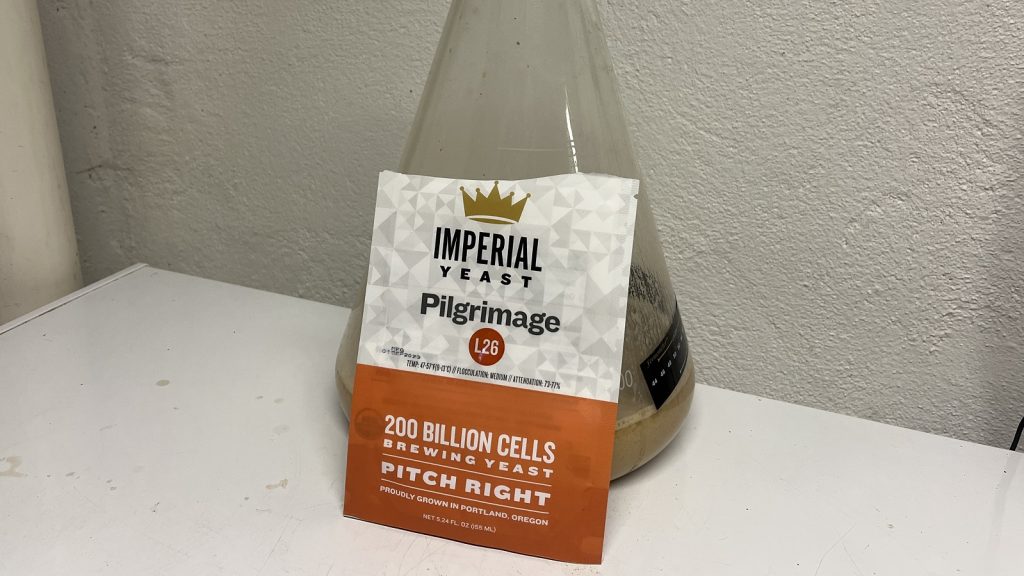
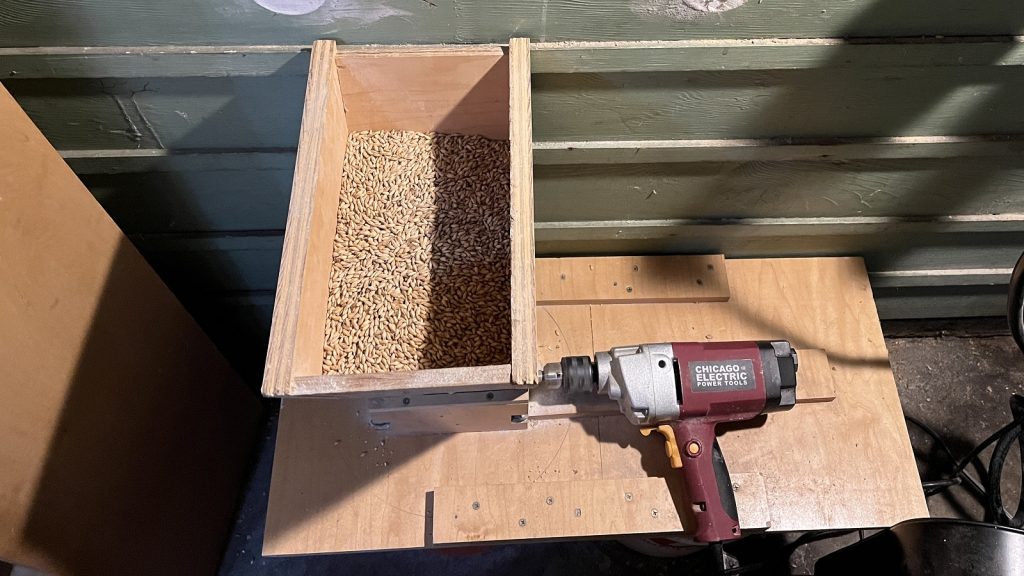
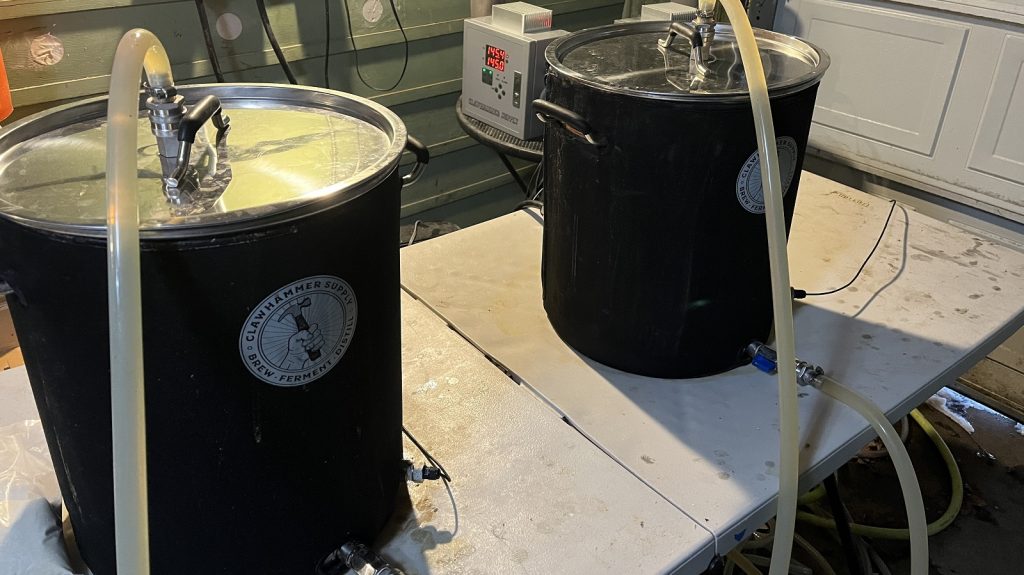
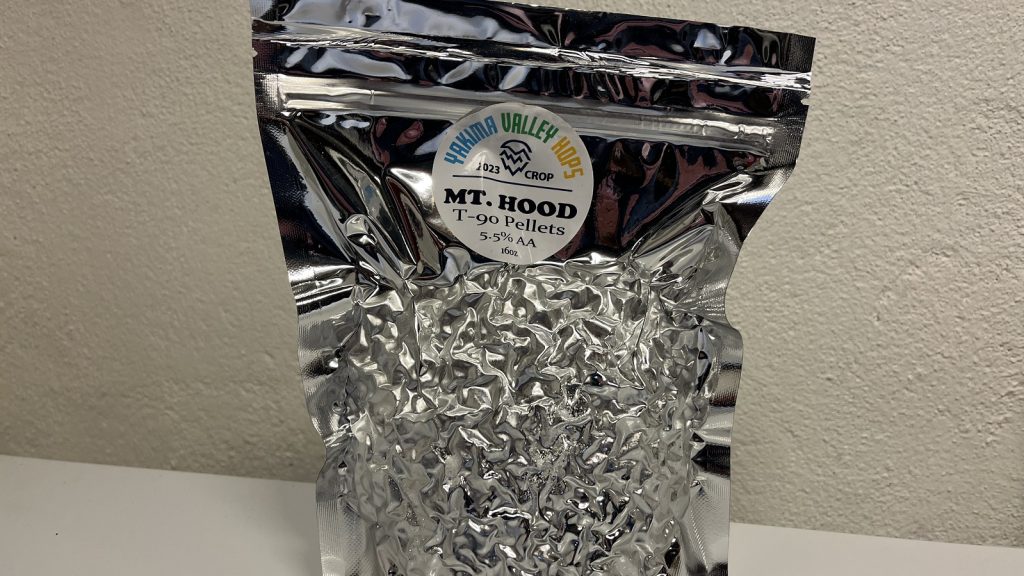
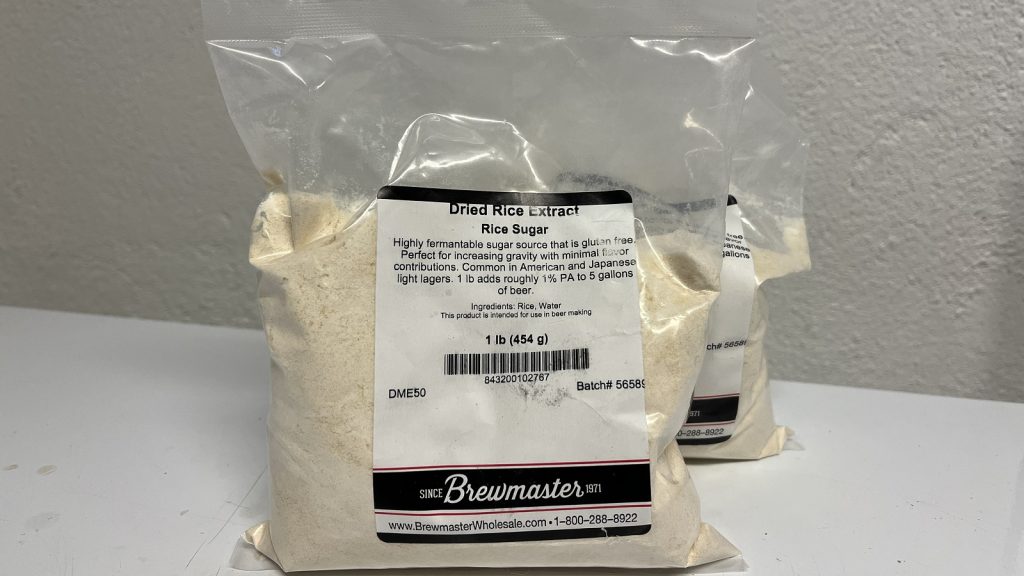











2 thoughts on “exBEERiment | Impact Rice Syrup Solids Have On An American Lager”
A surprising result! Is there any reason to expect a difference between rice syrup solids and corn sugar (my usual choice for boosting gravity)?
Truly surprised here. I completely assumed 20% would be consistent noticed